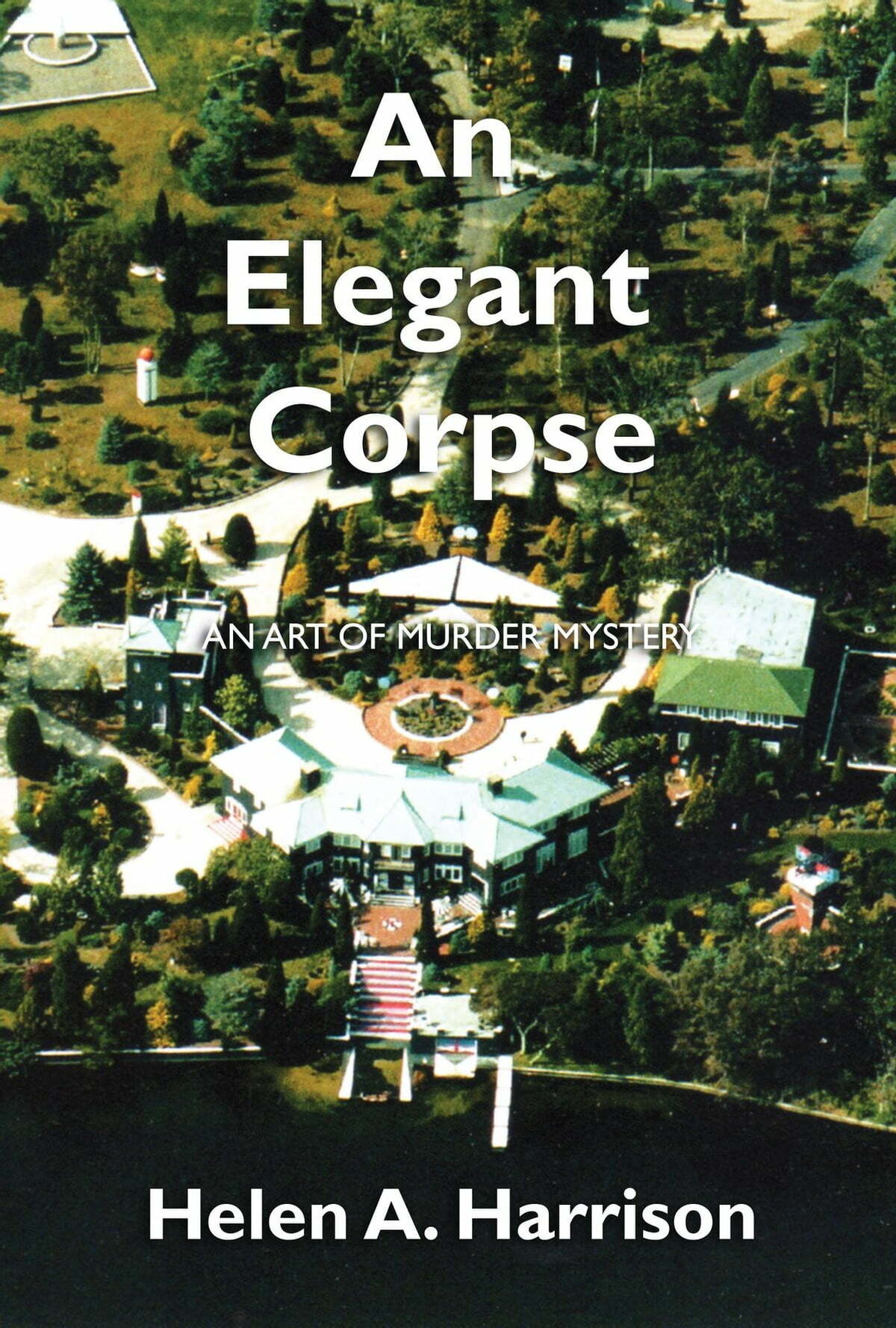
The bodies keep piling up in Helen A. Harrison’s murder mystery series — with the fourth, “An Elegant Corpse,” serendipitously coming out the same weekend Harrison will be talking about the book at the inaugural Hamptons Whodunit Festival (April 13-16), not to mention the coincidence of having her latest corpse turn up on an April 15th. It’s 1976, however, the crime scene is the old Ossorio estate in Wainscott, called The Creeks, and the victim? The wealthy, multi-media artist Alfonso Ossorio, himself, though the reader doesn’t know that immediately, and the sleuthing won’t start in earnest until 113 pages later.
But wait, Ossorio wasn’t murdered and didn’t die until 1990, and his longtime partner Ted Dragon, who becomes a number-one suspect in “An Elegant Corpse,” didn’t die until 2011. Of course, Harrison, executive director of the Pollock-Krasner House and Study Center in Springs and a scholar of contemporary American art, knows this, but, as she has playfully done in her three previous murder mysteries (“An Exquisite Corpse,” “An Accidental Corpse” and “An Artful Corpse”), she’s taken, as she says, “significant liberties [‘deviations from the truth’] with the estate’s inhabitants and their circumstances” to create a diverting narrative that allows her to incorporate information and ideas about Abstract Expressionism that she’s researched and written about for years, particularly on Jackson Pollock and Lee Krasner. She refers to the mix of fact and fiction as a “hybrid story,” augmented by her memories of visiting Alfonso and Ted at The Creeks.
She also revisits fictional characters from the earlier books, mainly the charming red-haired young T.J. Fitzgerald, satisfying his twin passions for art and police work (his father Brian Fitzgerald was a NYPD Chief and his mother Juanita Diaz a detective — ergo T.J., a licensed P.I.). With his sweetheart Ellen, whom he met in art school and married, he goes about testing various leads as the newly established junior partner of a rough-and-tumble private investigator. Harrison integrates domestic scenes into the narrative, a device meant to give homey context to her invented characters, though these passages do not seem necessary to the plot. The intention probably derives from the author’s intuitive sense that her strongest suit is art history. As with her previous mysteries, extended sections on actual persons and places in the art world in mid-20th century America constitute the most substantial aspects of the narratives, as her many publications attest.
Readers who know something about the real-life players here and remember local Hamptons scenes of 50 years ago will enjoy following Harrison’s detailed place references — a valentine to the days before big-time real estate took over neighborhoods and money managed art; a time impressively captured in the book she co-authored with Constance Ayers Denne, “Hamptons Bohemia: Two Centuries of Artists and Writers on the Beach.” By the 1970s the name of the game is “market.” Nonetheless, the murdered Ossorio, found in the white salon alone with Pollock’s glorious “Lavender Mist, Number 1, 1950,” which he adored, when asked what “elevated” the painting above all others, replied that it was not merely a matter of “taste,” of liking it, but “quality,” a “consummate expression” of [Pollock’s] “creative genius.” Although the painting is at the heart of the murder, it’s heartening to discover that it is revered artistically as much as financially valued. Both factors figured in Pollock’s acquiescence in his dealer’s suggestion to name his paintings with words, not just numbers, arguing that named paintings were easier to sell.” And they were, Harrison knowingly adds.
Although the historical figures are presented warts and all, Harrison shows them motivated by both admirable and petty drives — ego, jealousy, revenge, despair. And neurosis. Ossorio, particularly, is shown as being consumed as years go by with an obsession for landscape, turning The Creeks into a magnificent sculpture garden and arboretum by spending well beyond what even he, as heir to a sugar fortune, could afford. Ironically, though dead in “An Elegant Corpse,” he emerges as the most complex character, a serious artist with works at, among others, MoMA, The Met and the Whitney. He studied at Harvard, the Rhode Island School of Design and served as a medical illustrator during World War II.
As for the plot, solving the whodunit, it is resolved in a way that supports the book’s main attraction as art history. Short chapters, written generally in a subject-predicate declarative style, create plausible motives for who might have poisoned Ossorio with a ham sandwich, but by the time it’s over one thing is certain: Because of this book, The Creeks, last owned by billionaire Ronald O. Perelman, will certainly spur interest for more than its selling price.
Hamptons Whodunit (aka the Hamptons Mystery & Crime Festival) runs April 13 to 16 at locations throughout East Hampton Village. On Thursday, April 14, Helen A. Harrison will be at BookHampton, 41 Main Street, East Hampton, from 12:20 to 12:50 p.m. to sign copies of “An Elegant Corpse.” On Friday, April 15, at 11 a.m., Harrison will take part in “Murder in the Hamptons,” a panel discussion with fellow authors Eve Karlin and Randye Lordon moderated by festival organizer Carrie Doyle. Visit hamptonswhodunit.com for location and more information.